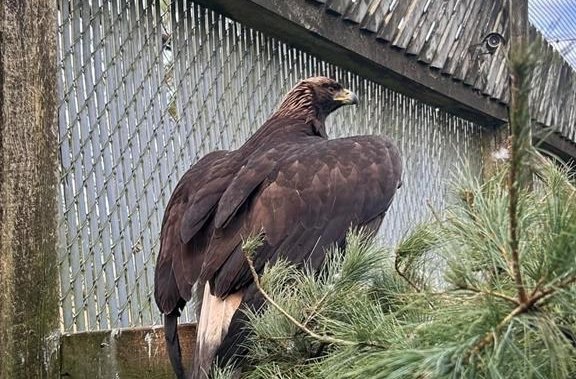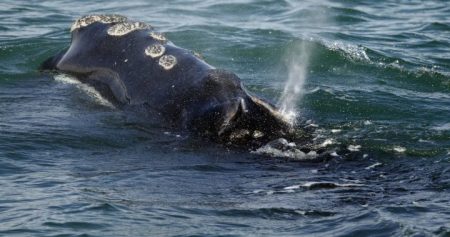The unexpected arrival of a golden eagle in central Prince Edward Island in November sparked a chain of events involving concerned citizens, wildlife rescuers, and a renowned wildlife rehabilitation center. The majestic bird, a rare sight in the Maritime provinces, was discovered grounded and seemingly unwell in the middle of a road, its unusual presence captivating those who encountered it.
A local resident, alerted to the eagle’s plight, immediately took action, using her coat to guide the bird to the roadside, preventing it from becoming a traffic casualty. Her husband joined the effort, attempting to capture the eagle with a blanket, providing a humorous account of the bird’s awkward, cartoon-like running style. Hours later, a Humane Society officer, equipped with protective gloves and a soft duvet, successfully rescued the eagle, ensuring its safety and initiating the next phase of its journey.
The eagle was placed in the care of Candy Gallant of P.E.I. Wildlife Rescue and Rehabilitation Inc. Gallant, unaware of the bird’s true identity as a golden eagle, provided initial care for several weeks before transferring it to Hope for Wildlife, a respected rehabilitation center in Nova Scotia. It was at Hope for Wildlife that the eagle’s species was confirmed, generating excitement among the staff who recognized the rarity of encountering such a magnificent creature.
At Hope for Wildlife, the eagle underwent a comprehensive examination to determine the cause of its grounding. Surprisingly, no underlying health issues were found, leading experts to speculate that exhaustion from a long flight or a temporary ailment might have been responsible for the bird’s weakened state. Founder Hope Swinimer, who has only seen three golden eagles in her lifetime, expressed relief and amazement at the bird’s recovery.
The golden eagle, now deemed healthy and strong, was housed in a flight cage alongside a bald eagle, providing companionship during its rehabilitation. Swinimer noted the compatibility of the two eagle species, highlighting the golden eagle’s streamlined physique and its apparent aptitude for speed. This interspecies camaraderie offered a unique opportunity to observe the contrasting characteristics and behaviors of these powerful raptors.
Nick Lund, a network manager for Maine Audubon, provided insight into the golden eagle’s characteristics and migratory patterns. He explained that golden eagles, similar in size to bald eagles, are formidable predators known for hunting live prey, including rabbits, hares, and even larger animals like sheep and deer. While breeding primarily in western North America, some golden eagles undertake extensive migrations, venturing into eastern regions, including the Maritime provinces, in search of more favorable hunting grounds during winter. This particular eagle was likely a wandering migrant from western Canada, its presence in the Maritimes a testament to the species’ wide-ranging movements.
Hope for Wildlife is now awaiting optimal weather conditions – a stretch of sunny days with calm winds – to release the golden eagle back into the wild, allowing it to continue its remarkable journey. If unfavorable weather persists, the center is prepared to provide winter care for the eagle, ensuring its well-being until a suitable release opportunity arises. The eagle’s resilience, combined with the dedicated efforts of rescuers and rehabilitation experts, has paved the way for its eventual return to the skies, a hopeful symbol of wildlife conservation and the interconnectedness of ecosystems.










